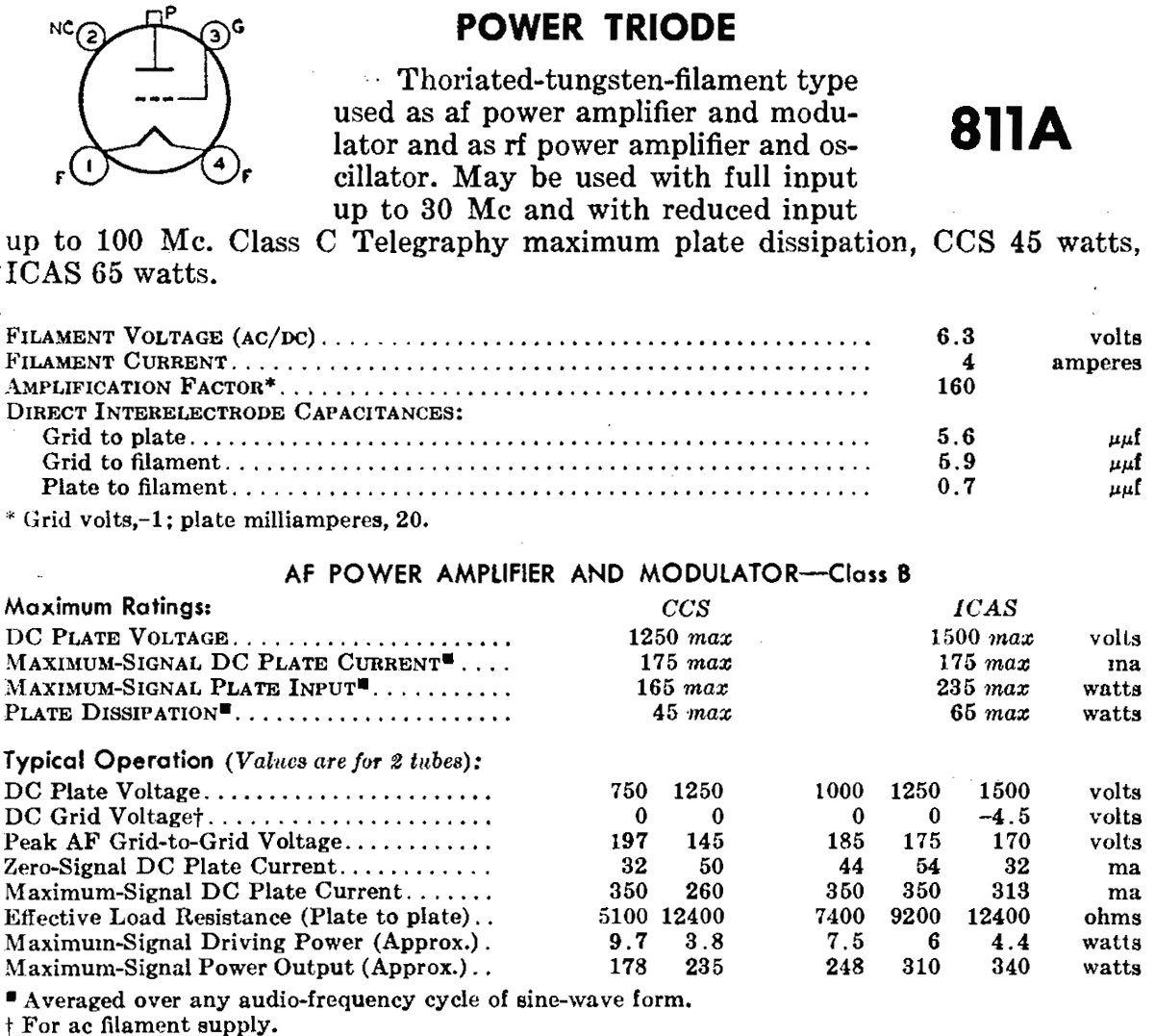
what's not to like?
audio conditions for pair of 3-500Z tubes

Inside the older AM radio station equipment, a large audio amplifier called a modulator impreses the misical signal onto the power supply voltage feeding the final RF power amplifier stage, and the music goes out over the air.
In laboratories where it may be necessary to use a power source of 400Hz, 1Khz, or any other frequency not found in the usual wall sockets, an oscillator drives a large audio amplifier, and its output transformer would be equipped with a 110-240V winding appropriate to the application. These units are built into one piece in most cases and can be bought in sizes ranging from 100 watts up to many kilowatts.
In the old days of drive-in movie theaters, each speaker might need 3 watts, considering line loss, etc., to make 1.5W in the car. If there are 800 of them, that is 2.4KW. Sometimes, it was handled by a single large amplifier in the projection booth.
Before the 1970's, audio-range high-power signals were always made by these big tube amplifiers in one form or another. The one thing the amplifiers always have in common is an output transformer. For shaker and audio service, the output impedance may be similar to a speaker impedance, that is, 1 to 50 Ohms. Modulators have an output impedance of 1000 to 10,000 Ohms, generally. The point is that there have always been output transformers for tube type audio amplifiers capable of delivering kilowatts of clean power.
Peter Dahl co. was a producer and designer of modulation transformers, and any other type of power handling iron a customer might have wanted. Those designs went all the way up the industrial scale. Other companies did similar work, and the manufacturers of the ampifiers and transmitters themselves were responsible for those KW-size audio designs. Today, it appears that Hammond is taking over the line of Dahl, with it having a short in-between stint in Harbach Co. It is our wish as RF an audio experimenters that the modulation transformers are offered, as well as new audio output transformers based on those simple but high-power, high-voltage designs, with some hi-fi techniques added. If necessary. Is it necessary? What seems necessary to us is that the transformer not go up in smoke when driven to 300W by two 811A's at 1500V. Or, in case of a 'large' amplifier, like the Philips EL6472, that they be able to tolerate 4500VDC and make 2KVA. Audio and power enthusiasts do not mind paying for a part that has to be ordered, made, and waited for, as long as it meets a published spec.
Philips built the EL6472 amplifier in the early 1950's. Therefore it is 100% possible to build an audio output transformer to handle 2KW with vacuum tubes. Some vacuum tubes will continue to be made for decades, such as the ceramic and metal ones, as well as a few glass beauties like the 3-500Z. Tubes are used in small RF power amplifiers (1-2KW) designed for longevity and economy.
To all transformer makers: Here is an opportunity. It is low volume and high profit. The techniqies and materials are known and proven and the patents are expired. Where are all the 250 Watt push pull audio output transformers designed for two 811A's in push pull? How about the 1KW ones designed for a pair of 3-500Z's? I guess they are in engineer's dreams, because they are not on the market. I've been told some of the reasons why (besides low volume).
1.) the wire has to be specially insulated and this makes it thicker resulting in a larger transformer.
2.) properly winding the wire as in a hi-fi transformer would make this even larger
3.) we do not have large tooling for KW-size transformers.
Those are valid reasons. I don't know what Peter Dahl did for interleaving but no one complained abut fidelity with his designs. The tooling from that shop is somewhere. If not, power transformer tooling is around. If I could take a Peter Dahl 1KW modulation transformer, remove the hign impedance secondary, and replace it with four coils made of #12 wire, I'd have one heck of an output transformer. 100 Volts across 5 Ohms is 2KW. 8000V center tapped primary. 100V secondary. 2KVA. Backwards, it looks mechanically a lot like a high voltage power supply transformer. Just think about it. Not everyone wants the 1000 watt amp full of transistors. The tube sound ought to be there at the KW level, not the mere 200W as provided by most reasonably priced audio transformers today. Additionally, I don't want to use eight matched 6550's or KT88's just to make 200 Watts. That ciruit is a band-aid, a hack or patch to combine four 50-watt amplifiers. The 200W iron is fine, but we need iron that will allow one pair of commonly available tubes to do the job at those power levels and above.

